5 tips for switching to project portfolio management
Are your projects not delivering the expected value? Like our webinar participants Five tips for switching to project portfolio managementIf you're looking for new ways to optimize your project management, this article is designed to help.
If you recognize yourself in the following situations:
- Projects are multiplying and it's becoming difficult to keep track of them all.
- The link between project and corporate strategy is not obvious
- You struggle to manage your available resources effectively
- Your projects are increasingly interconnected, but your organization is still divided into silos.
Then it's time to take a more global approach. We suggest you move from project management to a global vision: that of the project portfolio. This approach will provide you with many hitherto untapped performance levers!
In search of lost project performance
During our webinar in partnership with Projexion, experts in transformation and project portfolio management, we discussed this topic in detail. If you missed this event, don't hesitate to consult the replay.
Poll - What motivates you to attend this webinar?
During this webinar, we asked our listeners the following question:
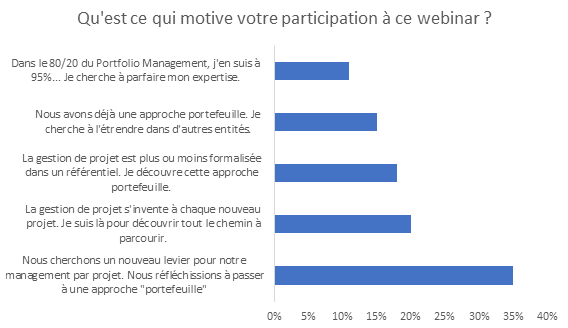
35% of our webinar participants are looking for new performance levers for their project management.
Because project management and project portfolio management are not the same thing.
To complement your approach to project management with a more comprehensive perspective, project portfolio management, it's essential to understand the fundamental difference between these two approaches. Of course, both are about management... but the heart of the matter is fundamentally different.
Project management focuses on the individual realization of specific projects, ensuring their efficient execution while managing resources and deadlines. Project portfolio management, on the other hand, takes a broader perspective, aiming to coordinate and prioritize numerous projects aligned with strategic objectives.
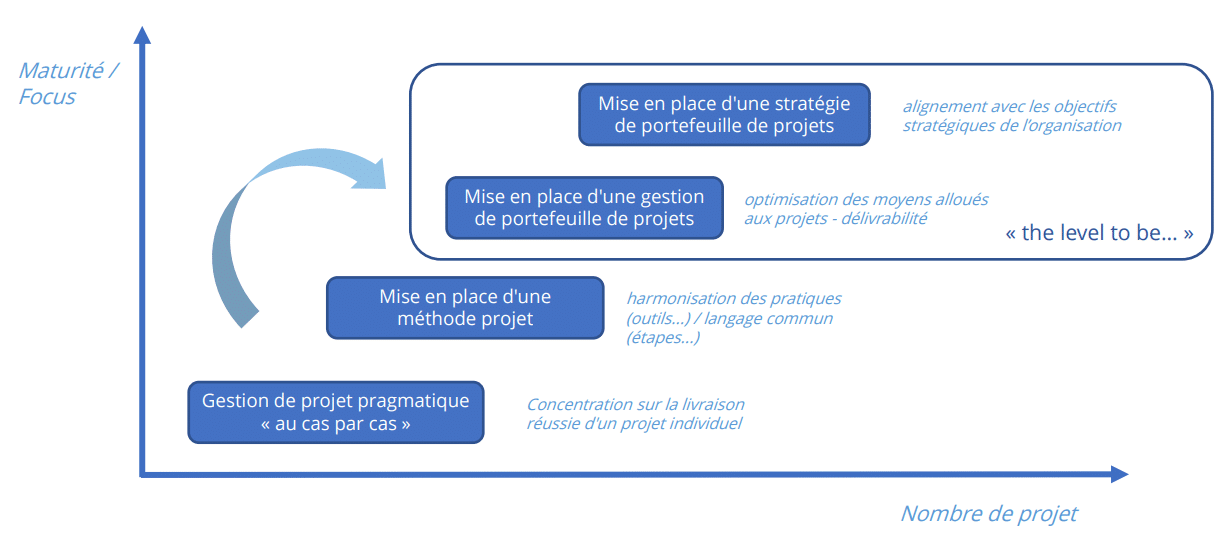
Combining project management with portfolio management is crucial to maximizing the value of projects. It combines the operational efficiency of project management with the strategic and tactical vision of portfolio management. This synergy ensures that individual projects contribute optimally to the organization's strategic objectives, while optimizing resource allocation and minimizing potential conflicts between projects.
To find out more, read our Ebook - La gestion des projets au sein des CIO des collectivités territoriales - Equilibre entre stratégie et oopérationnel.
Moreover, isolated project management reaches its limits when :
- The number of projects is increasing dramatically, with the resultant growing complexity.
- Some projects are not directly aligned with corporate strategy, requiring arbitration decisions.
- As projects multiply, it becomes essential to to make arbitration decisions to determine which projects to prioritize, taking into account any constraints that may arise.
- Some projects are abandoned, or their scope is reduced along the way, resulting in unnecessary expenditure.
- Visit resource managementespecially on the business side, remains a challenge.
- Visit project budgets are frequently exceeded, highlighting the importance of project financial management.
- Many companies still operate in silos, despite the increasingly cross-functional nature of projects.
Poll - In what situation(s) do you recognize your organization?
During this webinar, we asked our listeners the following question:
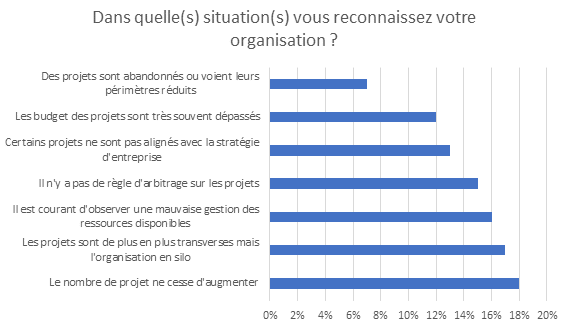
The three main concerns of our webinar participants are the increasing number of projects, the growing cross-functionality of projects despite siloed organizations, and the difficulty of managing available resources.
Motivations for Project Portfolio Management
The reasons for adopting project portfolio management can be grouped under three headings:
- Businesses are once again taking the lead, with projects that are not exclusively focused on digital technology.
- The size of the organization plays a crucial role, especially for larger companies faced with increasing complexity.
- The maturity of the project culture is becoming increasingly predominant, particularly with the rise in importance of "build" projects.
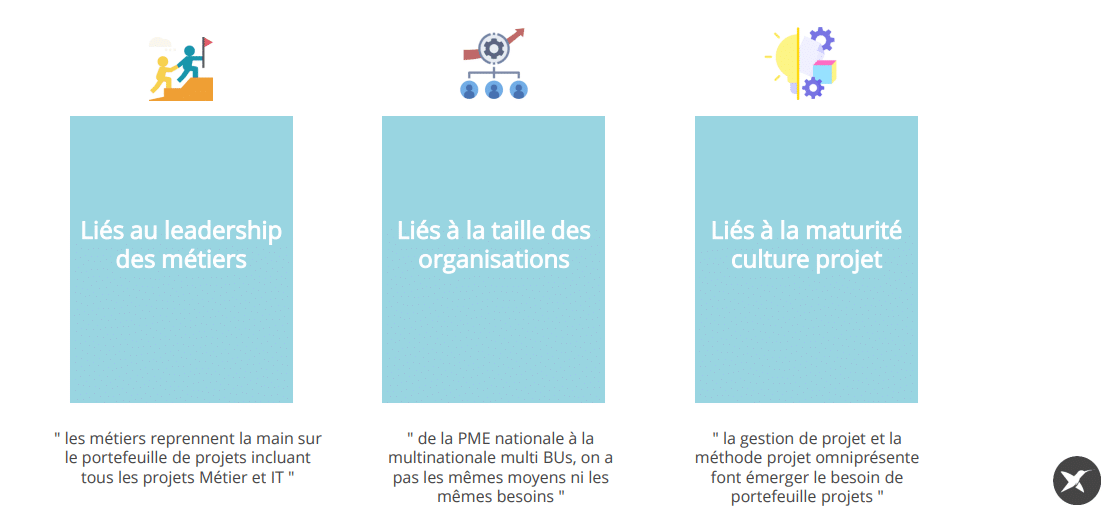
5 tips for improving project performance with Portfolio Management
Here are five essential tips to help you integrate project portfolio management (or porftfolio management) into your project practices.
Tip 1: Establish solid governance
The increase in the number of projects, their growing complexity and interconnectivity, calls for solid governance and programmed decision-making bodies. It's a question of bringing together around the table "the sponsors" and "the implementers" (or project owners and project managers). For many projects, this means involving both IT and business teams. This will enable you to maintain control over all projects, whatever the size of your organization.
Tip 2: Establish a structured project application process
With the proliferation of projects, it's essential to put in place a structured process for requesting new projects. This will enable you to frame projects, prioritize them and decide on their relevance, thus avoiding uncontrolled project inflation.
To find out more, take a look at our Ebook - Project arbitration checklist
You'll also find valuable tips in the testimonial from the Loiret GHT, which reviews almost 100 project requests every two weeks!
Tip 3: Align projects with strategy
Make sure that every project serves your company's strategy. This means developing a clear strategic vision and ensuring that all projects are aligned with this strategy. Projects should be means to an end, not isolated initiatives.
If this advice seems obvious to you, reverse the approach! If each project can be targeted at one or more strategic axes, fine. Now turn the question on its head: are your strategic axes being addressed by projects? Is the distribution of investments proportional to the importance of the strategic objectives?
Tip 4: Be exhaustive
To make effective arbitration decisions, identify all your company's projects, initiatives and programs. Map, list and categorize them for a complete view. Comprehensiveness is essential for effective management.
The creation of a single project repository is the only guarantee of completeness. A Project Portfolio Management platform becomes the single repository. "If the project is not in Project Monitor , then it doesn't exist in the eyes of the organization".
This completeness requirement must extend to non-project activities if you want to know your true capacity to take on new projects. This is key if your resources are not 100% dedicated to projects - which is true of most project teams.
Tip 5: Acquire the necessary skills
Don't ignore the importance of the specific skills required for project portfolio management. Don't improvise as a PMO. Train yourself or hire resources with the required skills. Find out more in our Ebook - PMO Structuring and equipping your project office.
If you're interested in setting up a PMO function, Alptis Assurance's testimonial will show you the milestones in the transition from an ISO-standard project approach to the emergence of a PMO function.
Poll - Which action(s) do you consider most important for your organization?
During this webinar, we asked our listeners the following question:
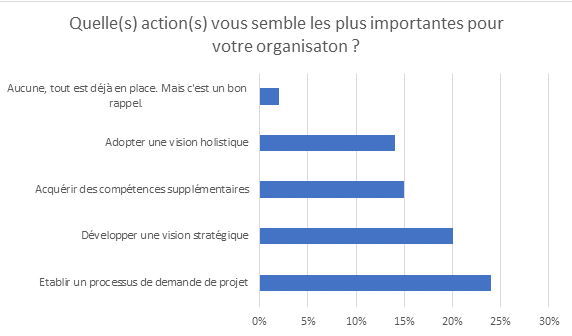
26% of participants considered that setting up governance was the most crucial action to take within their organization.
Project portfolio management is a crucial element in improving the performance of your projects. The five tips we've shared here will help you achieve this goal.
By putting solid governance in place, establishing a structured project application process, aligning your projects with your strategy, being comprehensive in your approach, and acquiring the necessary skills, you can maximize the effectiveness of your projects and ensure that they make a real contribution to your organization's success.
If you'd like to know more about project portfolio management, how to set up a PMO function, or how to structure and equip your project office, we're here to help. Contact us to discuss how we can help you improve the performance of your projects. Request a personalized demo to discover how Project Portfolio Management can transform your organization.
Find out more about Project Monitor, a simple, scalable project portfolio management tool.
- Idea management: Identify, analyze and prioritize requests.
- Planning: Visualize your project schedules with Gantt charts and timelines
- Project review: Obtain data easily in project tracking sheets, exportable as PPTs for your meetings
- Tasks: Manage tasks and track their progress, from project request to completion, using Kanban.
- Collaborative: Flash reports, file sharing.
- Time tracking and resource management: Visibility into capacity schedule and what remains to be done.
- Budget monitoring: Plan, monitor and re-estimate project budgets
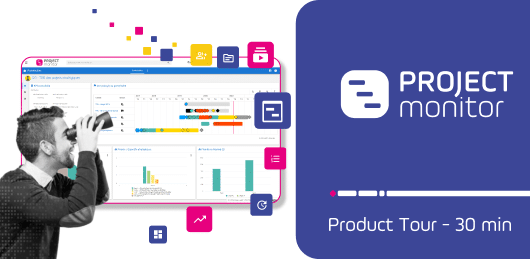
Jeudi 12 septembre 2024
Discover the project portfolio management application Project Monitor. A 30-minute exploration of the key functions of the PPM solution for simple, customized management!
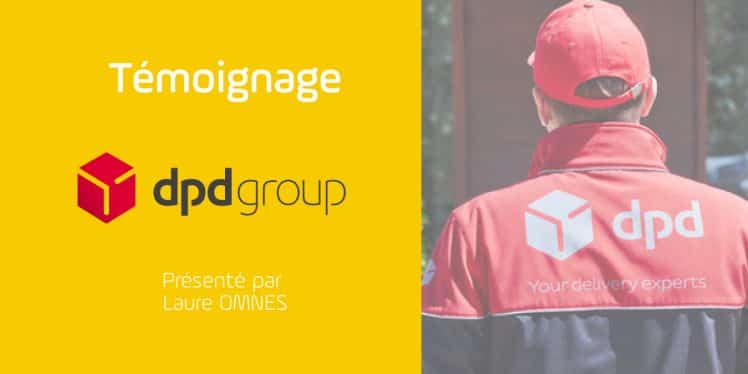
At DPD Group, we deliver projects with the same obsession for rapid parcel delivery. Commando mode is activated for the implementation of Project Monitor ! A behind-the-scenes look at this exemplary player!
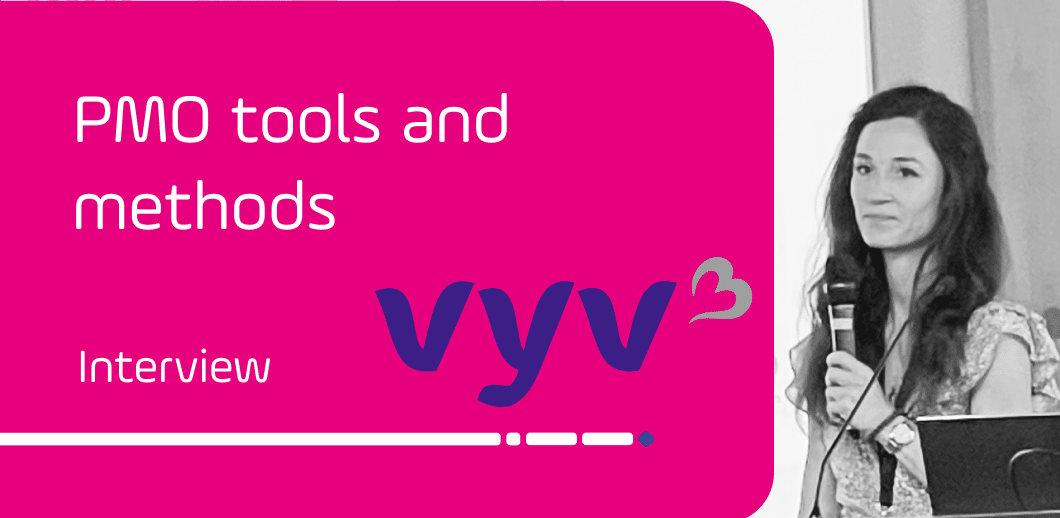
Advice on PMO tools and methods from Céline DESERT, IT Transformation & PMO Project Manager at VYV3 IT
Best-of questions/answers during the webinar
How does continuous improvement fit into project portfolio management?
Continuous improvement occupies a distinct position within project portfolio management. Project portfolio management generally focuses on disruptive strategies, whereas continuous improvement concentrates on a constant, evolutionary process. Project portfolio management manages projects with defined beginnings and ends, whereas continuous improvement, as the name suggests, is an ongoing process.
However, it is interesting to note that it is possible to integrate a project portfolio management approach within continuous improvement, while maintaining a clear distinction with other ongoing projects. Continuous improvement involves identifying irritants, creating action plans, and rigorously monitoring their implementation. In some cases, this can lead to the identification of new projects or project needs, which are then managed as part of demand management. In this way, continuous improvement and project portfolio management can work together synergistically to continuously improve organizational processes and results.
Is the project portfolio management approach compatible with agility at scale, and what are the considerations involved in centralizing or decentralizing this approach?
The project portfolio management approach is fully compatible with agile at scale. There are well-established agile frameworks, such as Scrum, for project management, as well as frameworks for moving to portfolio management at agile scale. Agile is one method among many, and can be seamlessly integrated into project portfolio management.
As for the centralization or decentralization of this approach, both are valid. It is possible to carry out preparatory work at department or function level before integrating it at a higher level, without this being incompatible. It is important to be able to manage both aspects effectively, as there may be several levels of portfolios. Striking the right balance will depend on the organizational culture and specific objectives, whether to promote cross-functionality or improve the efficiency of autonomous entities.
In addition, it is crucial to note that some projects can be found in different portfolios, as they have a cross-functional nature. Consequently, it is essential to consider them from both sides for consistent and efficient management.
From the five tips we've shared, including survey feedback, what are the key recommendations for making a successful transition from project management to project portfolio management?
To make the transition from project management to project portfolio management, we recommend a step-by-step approach. There's no need to make the process immediately complex. Start by identifying your projects. This step is crucial, as it may raise questions about what counts as a project. Then group the projects together in a coherent way.
A second essential point is to channel all projects into one place, to avoid unidentified or scattered projects. Then you can consider other management techniques, such as governance, which can be adapted to the context of the project portfolio.
In short, start small by identifying your projects, group them together in a coherent way, then explore suitable management techniques. This will enable you to move smoothly into project portfolio management.